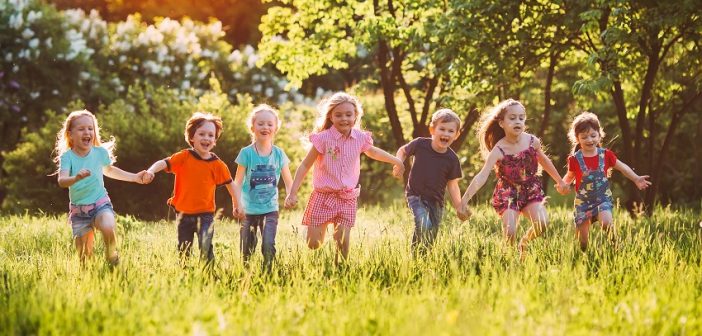As a parent, your goal is to raise your kids with the similar morals and values that you embody. If you like to save money, then you’re going to teach your kids to save money. If you love to volunteer, you’re probably going to take your kids with you on volunteer trips and projects.
Over the years, more people have raised awareness about the importance of sustainability. Parents everywhere want to embrace a life of sustainability and to be able to teach their children how to live in a world with care and passion for the environment around them.
Carrying those lessons about green living to the next generation is up to you. Here are seven tips to teach your kids about green living so you can trust in the future to take care of the earth in the same ways you do now.
1. Model the Right Behaviors
First of all, know that kids model your behaviors and actions. They often notice things that you do and then want to repeat them. Your simple mannerisms go a long way with your children, so if there are any habits you do that you don’t want your kids to mimic, then this is an excellent general parenting tip to know!
You’re responsible for modeling green living behaviors. That means conserving water, recycling, choosing sustainable products and so on. When your kids notice your eco-friendly habits, they’ll do the same.
2. Read Stories and Stay Updated on Environmental Topics
Reading stories allows you to bond with your children. This is a great way to introduce tough environmental topics to them, like climate change and pollution. Stories can help your child understand the importance of green living and spreading awareness.
There are stories about environmental topics for all ages. Following your story-reading, allow your kids to ask you questions. Make sure you’re open and honest with your answers so your children will take the topic seriously.
3. Give Them Sustainable Toys
Instead of giving your child toys that will eventually end up in the trash or can’t be recycled, choose sustainable toys. Whether you get hand-me-downs from their older cousins or siblings or choose toys from sustainable shops, you’re teaching your kids how to live green.
You could even have them make their toys out of recycled materials. If you have some extra fabric and stuffing, help them craft a teddy bear. You can also make little dolls out of a few cardboard paper towel rolls and some scrap paper.
4. Take Them Grocery Shopping
Although parents typically try to avoid taking kids to the grocery store, it can be highly beneficial to bring your kids with you. It doesn’t have to be every time you go to the grocery store, but once in a while, as long as you tell them rules about behaving correctly, you can bring them with you.
Explain that when you shop, you try to find eco-friendly items. Show them how you check labels and whether or not the fresh items are locally grown and organic or not. Ask them to help you choose products that have minimal packaging or have them search for labels you purchase.
5. Reduce, Reuse and Recycle at Home
Reducing, reusing and recycling is something most children learn in school. Bring those practices at home as well. Regularly show your kids how you might reduce waste, reuse products and recycle what you can.
One way to help them understand the importance of the three Rs is by talking about how paper is made and how recycling paper products can help the forest. Additionally, explain to them the effects of plastic products. Add recycling bins to your home and help your children sort various materials, like glass, paper and plastic.
6. Plant a Garden
Believe it or not, kids love to grow their own plants! If you have the space for it outside, then you can plant a small vegetable garden with your kids this year. If you don’t have room, you can always grow a few plants indoors, too!
This is a great way to show your kids where their food comes from. Choose which vegetables to grow after researching what kinds grow best in your region. Discuss with your kids that by planting a garden, they help reduce greenhouse gases. Be sure to use eco-friendly materials and practices as you tend to the garden as well.
7. Walk or Cycle When Possible
Finally, instead of taking your car every time you go somewhere, walk or bicycle with your kids. While this isn’t possible for everyone depending on where you live, if you do live in a more suburban or urban area, encourage your children to walk with you to a restaurant or store.
Teach them about carbon dioxide emissions along the way and how they harm the environment. If you live in a more rural area, you should still take walks. Find a local park or a nearby forest and spend time walking and soaking in the environment with your children.
Respecting the Environment as a Family
Every day is a teachable moment. The more you show your children and have open discussions with them about green living, the more likely they will be to take those practices into their adult lives. It’s never too early to respect what the earth has provided you!





It is not easy even for adults to explain why it is important to help protect the environment. But with children, everything is completely different. It is more difficult for them to make long-term commitments, make informed choices and not see them as limitations. However, nurturing a generation with an eco-minded mind can be one of the best investments in our sustainable future, fostering an active respect for the environment.
I think this is absolutely the right decision. It is necessary to teach children to take care of the environment from childhood. Nowadays, among the adult generation, there are a lot of people who do not believe in climate change and other problems. This is all due to ignorance, their parents did not convey this idea to them. Now our planet is not in the best condition, on climatescienceamerica.org you can read about the current situation. But let’s hope that there will be more activists for nature among the new generation.